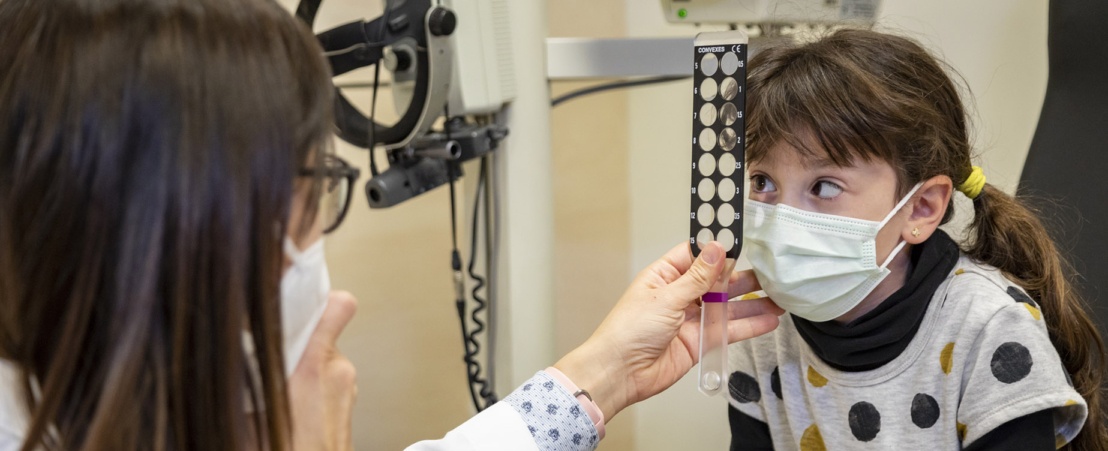
We speak of strabismus in children when a child suffers an alteration in the alignment of the eyes that causes them not to look simultaneously at the same point. Strabismus may appear in children as early as 6 months of age (congenital strabismus) or it may appear later and due to different causes. Strabismus can even occur in adults.
This eye deviation may be horizontal (inward or outward) or it may be vertical (upward or downward) and may affect one or both eyes. It can also be constant, meaning that the eye or eyes are deviated during the day, or variable, meaning that the eyes deviate more or less throughout the day and depending on the circumstances. On some occasions it may give the impression of a strabismus that is not real. This is called Pseudostrabismus.
The most serious consequence of a strabismus is amblyopia (commonly known as “lazy eye”). The child keeps the eye that is easier for him/her to focus on images straight and only uses that eye, while the deviated eye is not “working” and does not develop its functions correctly. Thus, we say that this eye becomes a “lazy eye”. Therefore, the earlier amblyopia is detected, the easier it is to recover.
It is very important to treat it before the age of 8, since it is approximately at that age that definitive vision is achieved. All children suffering from ocular deviation should therefore undergo an ophthalmologic evaluation by a pediatric ophthalmologist.
The appearance of strabismus in children may be influenced by several causes, among which:
Strabismus can also appear intermittently after an illness, a stressful condition or, in some cases, due to the continued use of computer, mobile or tablet screens.
Some of the symptoms of strabismus in childhood are:
There are different options when correcting childhood strabismus:

Eye muscle repair surgery has a high success rate with very few serious complications. It is an ambulatory procedure, does not require hospitalization, and children can return to school after a few days of rest. The most common side effects after strabismus surgery are redness, discomfort and pain, all of which are temporary.
Amblyopia or lazy eye consists of low vision in one eye due to poor coordination with the brain. The brain gives preference to the eye that sees better, which means that the other eye is not stimulated and does not work hard enough. It is important to detect it and treat it as soon as possible, since at approximately 8 years of age the definitive vision is reached and it is no longer possible to correct it. Strabismus, on the other hand, occurs when one or both eyes are deviated and can also be treated in adulthood. In many cases, lazy eye is a consequence of strabismus.
Unlike what was believed until recently, strabismus can be successfully corrected at any age, even in adults. In these cases, surgery will not correct the amblyopia or lazy eye that the patient has as a consequence of untreated childhood strabismus, although it can improve the patient’s appearance, as well as his or her perception of space and visual field.
Strabismus cannot be prevented, except in cases of intermittent strabismus resulting from screen abuse. However, it is important that both strabismus and lazy eye are detected early so that they can be treated and affect children’s daily lives as little as possible. It is therefore very important for parents to be aware of the symptoms and to see an ophthalmopediatrician if they suspect anything.
Estrabismo. Redacción médica
Strabismus in children. American Academy of Ophthalmology

Contact us or request an appointment with our medical team.